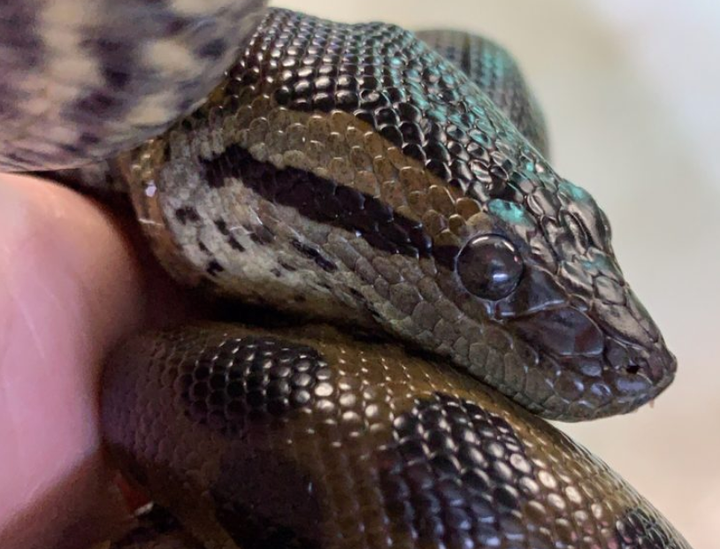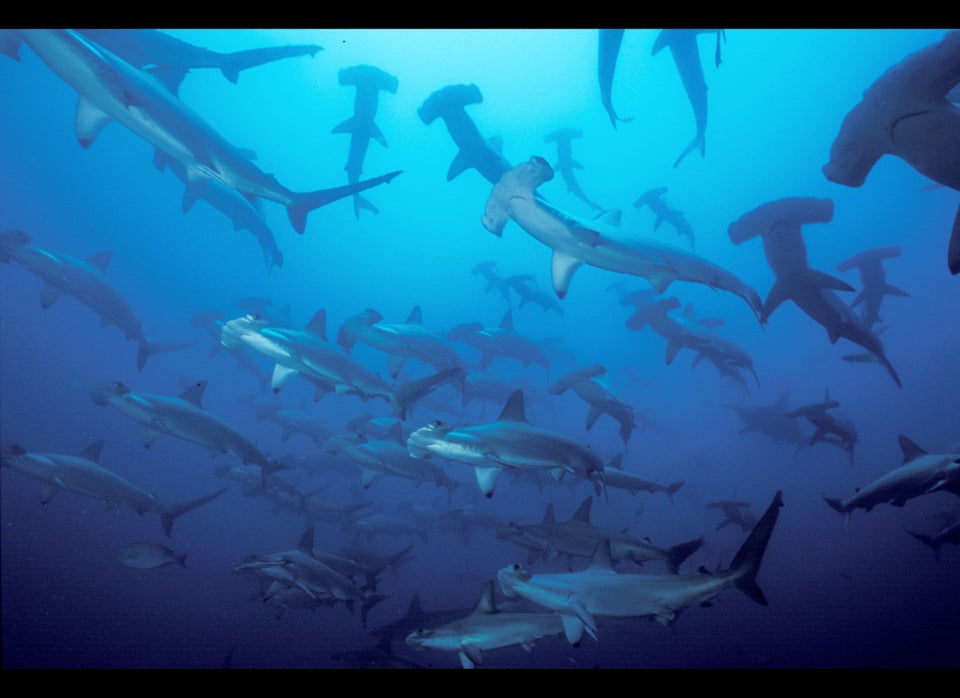A Boston aquarium has confirmed that the surprise birth of anaconda snakes to a mother living with only other females was an instance of parthenogenesis ― a term that comes from the Greek words meaning “virgin birth.”
Anna is an 8-year-old, 10-foot-long green anaconda living in the New England Aquarium’s Amazon exhibit, the facility said in a Thursday statement. The exhibit includes only female snakes, which was aimed at preventing them from reproducing.
But Anna didn’t need any males.
Staffers “unexpectedly” discovered “newborn snakes” in the exhibit over the winter, the aquarium’s statement read. They then found that Anna was still giving birth. (Anacondas give birth to live young, they do not lay eggs.)
Veterinarians “immediately suspected” that the births resulted from parthenogenesis, a form of nonsexual reproduction that involves an unfertilized egg developing into an embryo.
Parthenogenesis is extremely rare in vertebrate species ― which includes snakes ― that usually reproduce sexually. Among those animals, the phenomenon has been seen in Komodo dragons as well as some species of birds, sharks and snakes, according to National Geographic. It’s also more commonly seen in captive animals, though it has been observed in female pit vipers in the wild.
Only two of Anna’s offspring survived. Most were stillborn, the aquarium’s release said, noting that’s a common result when parthenogenesis happens. Of the three that were born alive, one died a couple of days later.
“Genetically, it’s a vulnerable process,” aquarium spokesman Tony LaCasse told The Washington Post. “It’s a completely unique and amazing reproductive strategy, but it has a low viability compared to sexual reproduction.”
But the two surviving young have “thrived” and are beginning to exhibit unique personalities. The release said that the smaller sibling is “laid back” while the bigger one is “more apt to explore and check out its surroundings by sniffing out items with its tongue.”

Anna’s case is the second known, confirmed instance of parthenogenesis in a green anaconda, the aquarium said. In Anna’s case, biologists confirmed what happened by ruling out any other possibilities, and ultimately tested her surviving offspring’s DNA.
The testing confirmed that the snakes were the products of parthenogenesis, and also found that they appear to be full genetic copies ― or clones ― of Anna.
“There can be different kinds of parthenogenesis, many of which do not yield exact DNA copies of their mother,” the statement read. “However, the limited genetic sequencing done for these two young snakes shows complete matches on all the sites tested.”

